Catocala praeclara
kah-TOCK-uh-lahmmpree-CLAIR-uh
Grote and Robinson, 1866
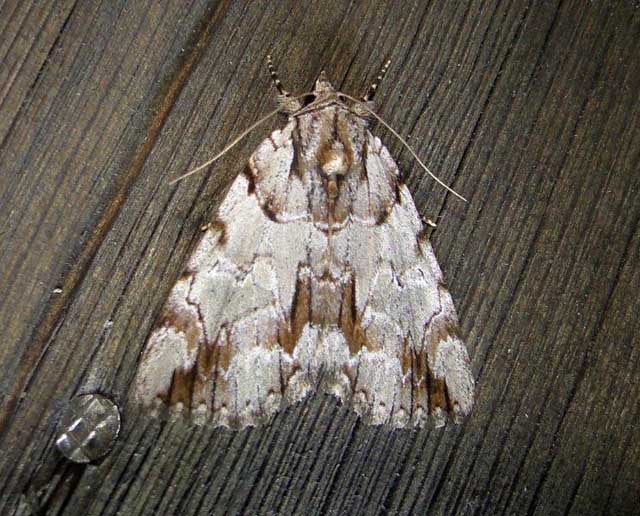
Catocala praeclara, Athol, Worcester County, Massachusetts,
July 15, 2011, courtesy of Dave Small.
This site has been created by
Bill Oehlke at oehlkew@islandtelecom.com
Comments, suggestions and/or additional information are welcomed by Bill.
| TAXONOMY:
Superfamily: Noctuoidea
Family: Noctuidae
Group: Noctuinina
Subfamily: Catocalinae
Genus: Catocala, Schrank, 1802
| |
MIDI MUSIC
"Moon River"
copyright C. Odenkirk
MIDI CITYON.OFF
<bgsound src="moon.mid" LOOP=FOREVER>
|
While trying to id the image top of page for Dave Small, I noticed the white-filled, double am lines, and the light subcircular patch on lower thorax, consistent
with other praeclara images, but previously unmentioned in the description of this species. I have updated the descriptions on the various state pictoral checklists,
and that should help make future determinations of this species easier, at least for me.
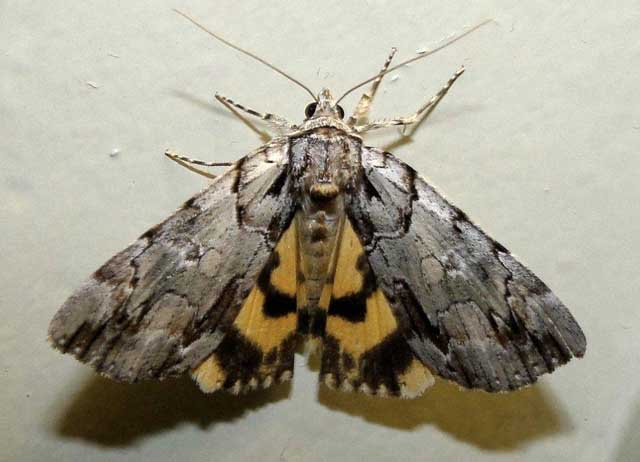
Catocala praeclara, Athol, Worcester County, Massachusetts,
August 2, 2011, courtesy of Dave Small.
I am often asked to identify Catocala, and had to carefully examine this specimen by actually writing a description of what I observe
before making a determination. There was some concern as to whether or not this might be Catocala mira, but my notes below, indicate why it is more likely
Catocala praeclara.
The Catocala depicted immediately above has an almost uniform ground colour of grey with a slight greenish cast. There is lighter grey (almost white) on the costa
from the body to about midpoint of median area where the costa gradually darkens to ground colour.
The basal area has three strong black dashes: one central, emanating from the body to about the middle of the basal area; the second running parallel
to the inner margin along one vein up from the inner margin from mid basal area to am line; the third emanating from the body, running along im almost to
antemedial line.
The amline is strong and dark in the costa, running almost obliquely before turning almost at a right angle near its midpoint, distant
from subreniform spot at this turn.
It turns again at a slightly oblique angle back toward the outer margin, before turnign again to the inner margin. The black outer edge is not as thick in the lower half of the line, and there is a strong
whitish presence interior to the aml in its lower half. The whitish inner lining is also present in the upper half, but is not as pronounced. There is much fainter, diffuse
light brown interior tracing of the whitish scaling.
The median area is pretty much devoid of markings except for a large, closed, subrectangular subreniform spot that is weakly outlined in
black and is slightly lighter than its surroundings. The reniform spot is a weakly delineated (very thin grey black outline) crescent with a whitish suffusion
surrounding the crescent.
The pmline is strong in its upper half to the completion of the two elongated teeth. Subsequent teeth are almost non-existant
until the third tooth which has its lower edge highlighted with a thick black streak, below which there is a dark brown bar, a thinner black steak on the next vein
and a brown area along the inner margin.
The subterminal area is a mix of light and dark brown and the terminal area shows some strong black highlights
on veins, and a row of white dots (appearing non-connected) subparallel to outer margin.
I looked at my description above and applied it to the other preaclara images on this page and found it to be an appropriate description, with some slight
variations, possibly due to angle, size, or quality of photos.
When applying the same description to mira, I find mira has a costa that lacks the lighter, whiter section near the body. Mira lacks the additional streaks in the
basal area. Ground colour is not as consistent in mira, and there is a definite lighter area in median area of mira from subreniform spot to costa
outside of amline. I also found the am line in mira gets very close to the lower inner edge of the subreniform spot. The dark steak in the lower reaches of the pm line is not so think in mira,
and the brown area along the inner margin is much weaker in mira. For all of the above, I feel this moth is more likely praeclara. The same moth is depicted below.
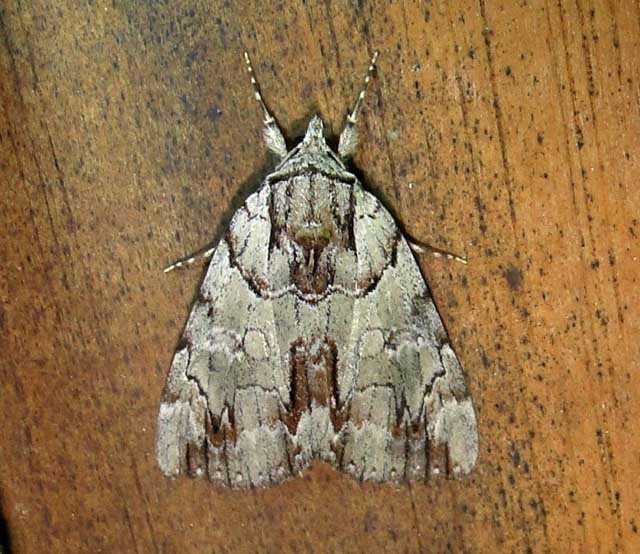
Catocala praeclara, Athol, Worcester County, Massachusetts,
August 2, 2011, courtesy of Dave Small.
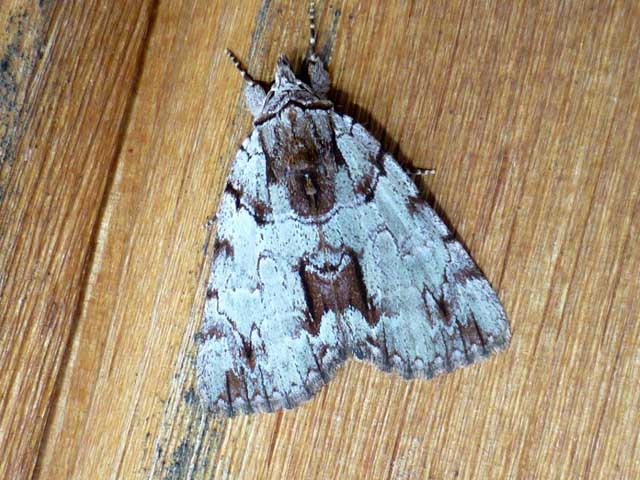
Catocala praeclara, Athol, Worcester County, Massachusetts,
July 9, 2012, courtesy of Dave Small.
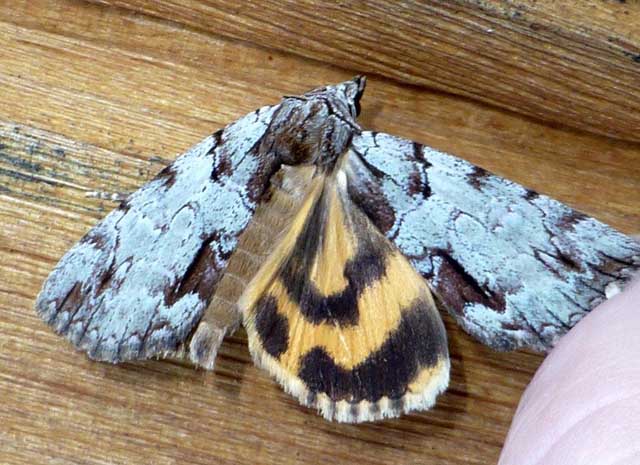
Catocala praeclara, Athol, Worcester County, Massachusetts,
July 9, 2012, courtesy of Dave Small.
Use your browser "Back" button to return to the previous page.
Return to Main Index




